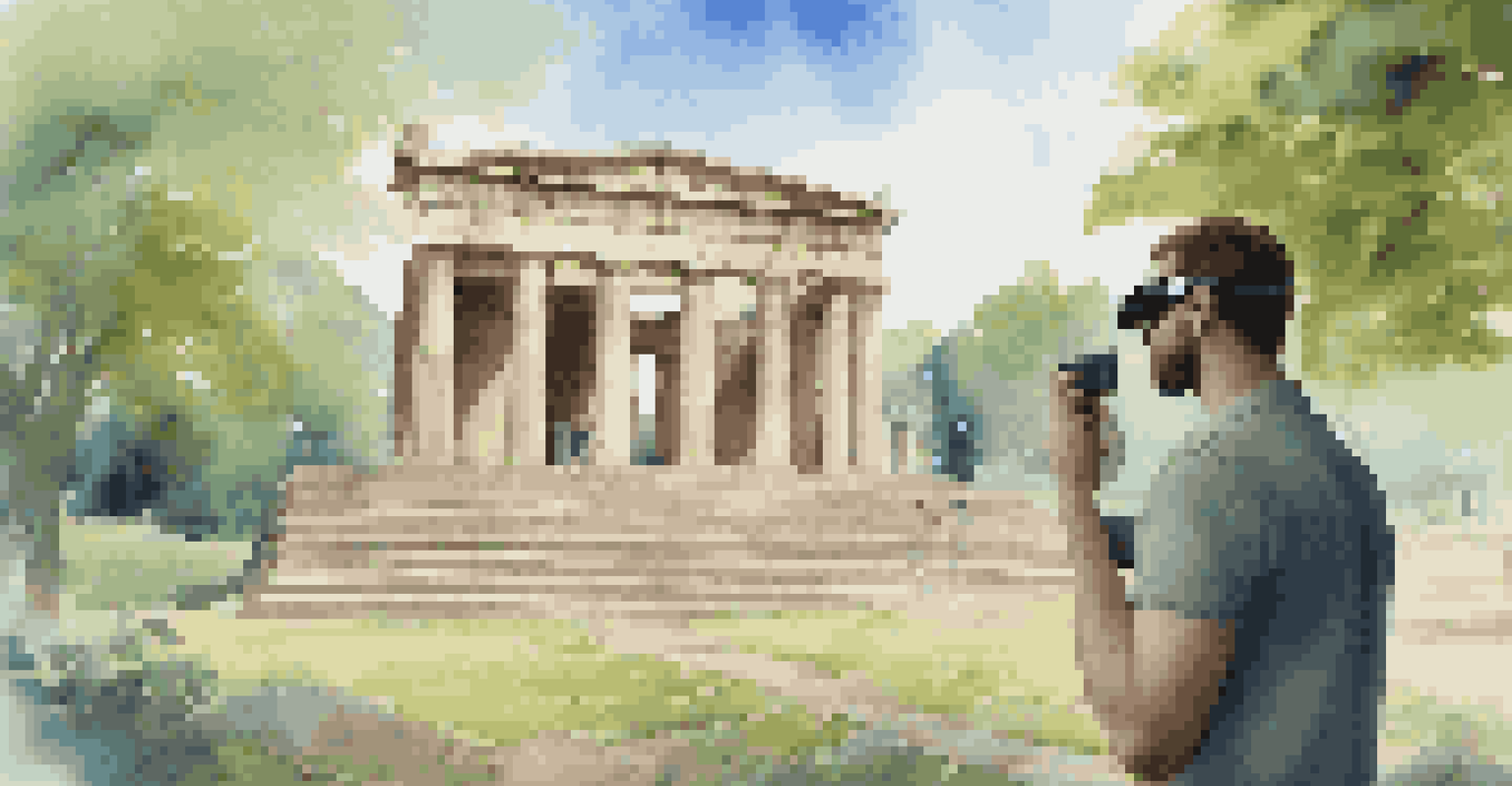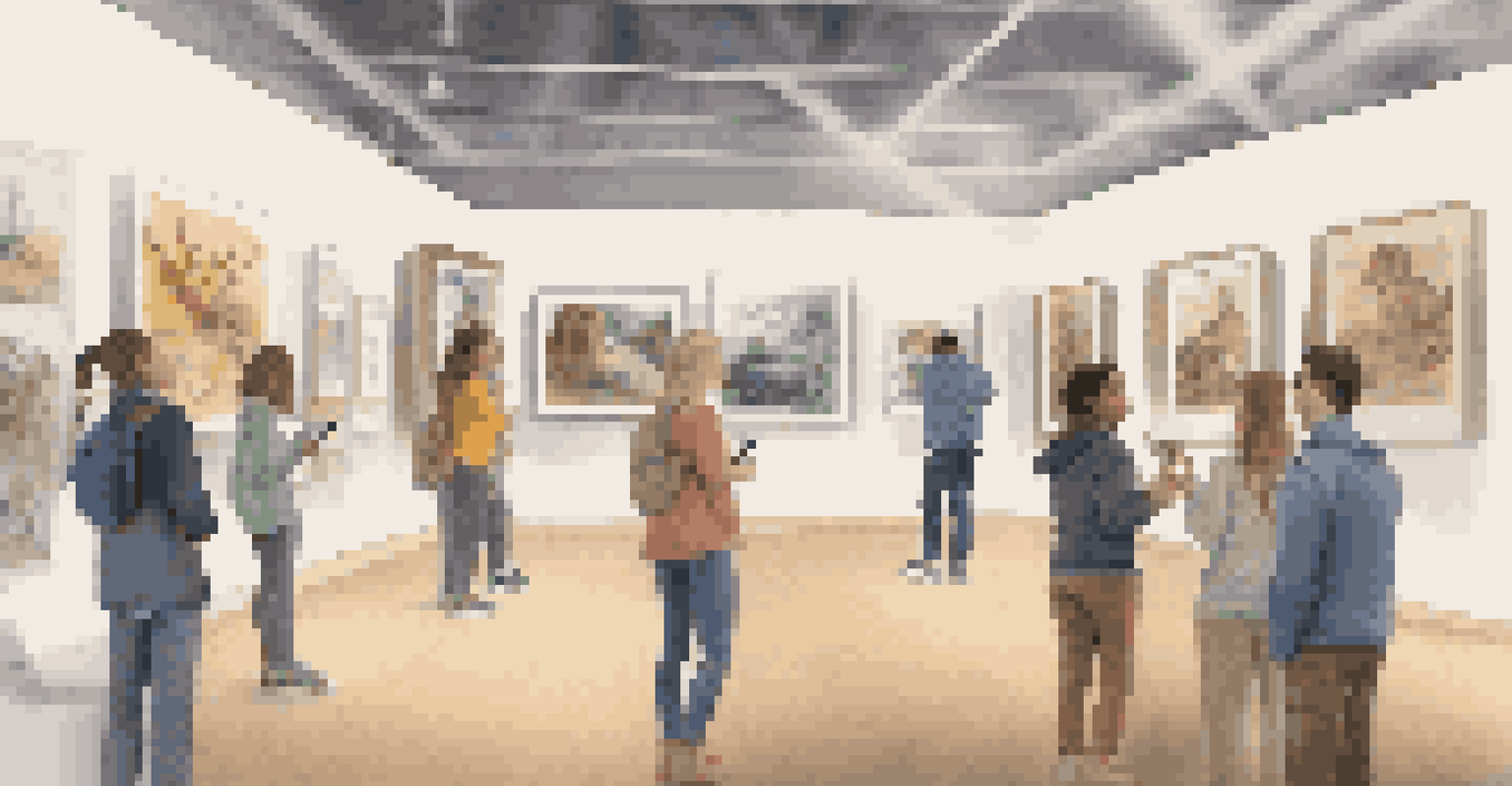Augmented Reality and the Future of Navigation: A New Era

Understanding Augmented Reality and Its Basics
Augmented Reality (AR) is a technology that overlays digital information onto the real world, enhancing our perception of our environment. Imagine walking through a city while your smartphone or AR glasses display directions, points of interest, and even historical facts about the buildings around you. This fusion of digital content with the physical world creates an interactive experience that can transform the way we navigate.
Augmented reality is going to change the way we interact with the world around us.
At its core, AR uses sensors and cameras to detect your surroundings, providing contextually relevant information that enhances real-world experiences. Think of it as having a smart guide that not only shows you the way but also enriches your journey with engaging stories and visuals. This technology is not just a novelty; it’s paving the way for more intuitive and immersive navigation solutions.
With the rise of AR applications, navigation is evolving from simple maps and GPS coordinates to dynamic, engaging experiences. This shift is especially significant for travelers, who often rely on navigation tools to explore unfamiliar places. By integrating AR into navigation, we can turn ordinary trips into extraordinary adventures.
The Role of AR in Everyday Navigation
AR is already making waves in our daily commutes and travels, bridging the gap between physical and digital navigation. Picture yourself walking in a busy city, and instead of staring at your phone, you see arrows and directions projected onto the street ahead, guiding you effortlessly to your destination. This not only enhances convenience but also allows you to stay engaged with your surroundings, making navigation less of a chore.

Moreover, AR tools can provide real-time updates, such as traffic conditions, detours, and construction alerts, directly in your line of sight. This immediate information helps you make smarter decisions while on the go. It’s like having a personal assistant who knows all the best routes and can adapt to changing conditions on the fly.
AR Transforms Navigation Experiences
Augmented Reality enhances navigation by overlaying digital information onto the real world, making travel more engaging and interactive.
In essence, AR is transforming everyday navigation into a seamless and interactive experience. As users become more accustomed to this technology, the potential for further innovations will likely lead to even more efficient and enjoyable travel experiences.
How AR Enhances Tourist Experiences
For tourists, AR can significantly enhance the experience of exploring new destinations. Imagine walking through a historical site, and as you look through your AR device, you can see reconstructions of ancient buildings or informative overlays that explain the significance of various landmarks. This not only adds depth to the experience but also allows visitors to connect with the history and culture of a place in a more meaningful way.
The future of AR is not just about the technology, but about enhancing human experiences.
Additionally, AR can offer guided tours that are personalized to your interests, providing recommendations for nearby attractions, restaurants, and activities. This level of customization ensures that each traveler can enjoy a unique experience tailored to their preferences. It's like having a knowledgeable local friend showing you around, highlighting all the hidden gems.
As tourism continues to evolve, AR technology stands out as a powerful tool for creating memorable experiences. By making information accessible and engaging, AR enables tourists to explore destinations in a way that goes beyond traditional guidebooks and maps.
The Future of AR in Navigation Technology
Looking ahead, the future of AR in navigation technology is incredibly promising. With advancements in hardware and software, we can expect AR tools to become even more sophisticated, integrating artificial intelligence to provide smarter navigation solutions. This could mean personalized routes based on individual preferences or real-time adjustments based on changing conditions.
Moreover, as AR becomes more mainstream, we may see the development of dedicated AR navigation devices, such as glasses or contact lenses, that seamlessly blend digital information with our field of vision. Imagine a world where you can navigate without ever needing to pull out your phone, as all the necessary information is displayed right before your eyes.
Personalized Tours for Travelers
AR offers tailored experiences for tourists, providing personalized recommendations and immersive historical insights as they explore new destinations.
As we embrace this new era of navigation, the implications for travel, transportation, and urban planning are vast. The integration of AR into navigation systems could lead to more efficient travel routes, reduced congestion, and a more enjoyable experience for all users.
Challenges and Limitations of AR Navigation
Despite the exciting potential of AR in navigation, there are challenges and limitations that need to be addressed. One major concern is the accuracy of AR data, which relies heavily on GPS and mapping technologies. In areas with poor signal or outdated maps, users may find themselves lost or misdirected, leading to frustration and safety concerns.
Additionally, the reliance on technology raises questions about accessibility. Not everyone has access to the latest devices or high-speed internet, which could create disparities in navigation experiences. Ensuring that AR navigation is inclusive and available to a broad audience will be essential for its success.
Lastly, as with any technology that collects personal data, privacy concerns arise. Users must feel confident that their information is secure and that their navigation history isn't being exploited. Addressing these challenges will be crucial as we move forward in integrating AR into our everyday navigation.
Case Studies: Successful AR Navigation Implementations
Several companies and organizations have already begun implementing AR navigation successfully, showcasing its potential. For instance, Google Maps has introduced AR walking directions, allowing users to see arrows and guidance superimposed on real-world images through their smartphone cameras. This feature has received positive feedback for its intuitive design and ease of use.
Another notable example is the use of AR in museums, where visitors can point their devices at exhibits to unlock additional content and interactive experiences. This not only enhances the understanding of the exhibits but also keeps visitors engaged and entertained, making for a memorable visit.
Future of AR in Navigation
The future of AR in navigation looks promising, with advancements set to create more intuitive and efficient travel solutions.
These case studies highlight the practical benefits of AR navigation, proving that it can be more than just a futuristic concept. As more organizations adopt this technology, we can expect to see innovative applications that further enrich navigation experiences.
Conclusion: Embracing the AR Navigation Revolution
As we wrap up our exploration of augmented reality and its impact on navigation, it's clear that we are on the brink of a significant transformation in how we travel and explore the world. AR holds the potential to make navigation not only more efficient but also more engaging and informative. Imagine traversing a city where every step is enhanced by digital enhancements that guide and educate you.
While challenges remain, the opportunities for innovation are immense. The journey towards a future where AR navigation is commonplace is already underway, and with continued advancements, we can anticipate a world where navigation is seamless and intuitive. It’s an exciting time to be a traveler!

In embracing this AR navigation revolution, we open the door to a new era of exploration and discovery. So, whether you're a casual traveler or a seasoned adventurer, get ready to experience navigation like never before.